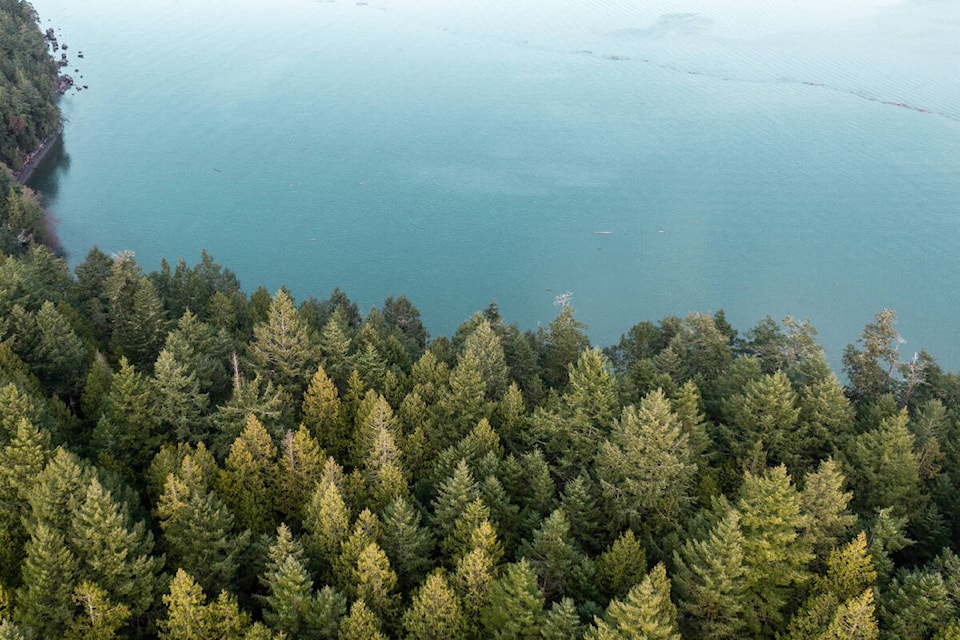A parcel of rare habitat on Pender Island once slated for development has been secured in a victory for wildlife conservation.
The Raincoast Conservancy Foundation and Pender Islands Conservancy announced last week the joint purchase of KELA_EKE Kingfisher Forest for $2.1 million after a little more than a year of fundraising — permanently protecting the 45-acre property.
Saanich conservation scientist Shauna Doll said if plans for the 15-lot waterfront development had proceeded, the land would’ve gone from a refugium to an unrecognizable residential suburb.
“It was urgent to make sure that this place didn’t get clear cut to put in all these mega-mansions along the coastline,” Doll, who works as director of Raincoast’s forest conservation program, told Black Press Media. “It wasn’t like the housing was going to be accessible to average people … so it wasn’t fulfilling any social need while putting the ecology of the area at risk.”
KELA_EKE Kingfisher Forest, a key piece of a larger nature corridor, connects land to sea across rare coastal Douglas fir forests in a region with less than one per cent of its historic extent of old-growth remaining.
It meets Plumper Sound, which serves as critical habitat for endangered Southern Resident killer whales, and is home to maturing coastal Douglas-fir, western red cedar and arbutus trees, according to Doll.
ALSO READ: First Nations, B.C. groups launch coalition to save Pacific salmon from extinction
The property also supports habitat for over 100 species of bird, including belted kingfishers that burrow in sand embankments along the shoreline, as well as several species federally recognized as threatened or of special concern.
Construction of buildings, roads, septic systems and utilities, Doll explained, would fragment the native forest and reduce groundwater storage, ultimately leading to habitat degradation.
With some of the highest rates of private land ownership in the province and few large, undeveloped lots remaining, Doll said land purchase for permanent protection in the Gulf Islands is among the few viable options to ensure a land base for ecological restoration.
“We’re so slow to move the needle on changing policy that we need to act immediately and start protecting these places while they still exist,” Doll said. “There’s so much development pressure, and if we’re not buying (land) now, we can’t be sure if it’s going to be there in five, 10 or 15 years.”
“The resilience of our communities in the face of climate change and ongoing development pressures is dependant on intact and healthy terrestrial and aquatic ecosystems,” said Erin O’Brien, Pender Islands Conservancy ecology and conservation director.
O’Brien added that roughly one-quarter of all donations for the campaign came from individuals in a remarkable display of collective action.
“People feel powerless because they can’t afford the cost of land right now,” O’Brien said. “But when we pool our resources and energy together, a lot more becomes possible.”
Doll said science and conservation staff from Raincoast and the Pender Islands Conservancy will spend the next several months studying the land as plans are drawn up for its restoration and ongoing management.
ALSO READ: Greater Victoria’s Trial Islands, Fort Rodd touted as key biodiversity areas
Do you have a story tip? Email: austin.westphal@saanichnews.com. Follow us on Twitter and Instagram, and like us on Facebook.



